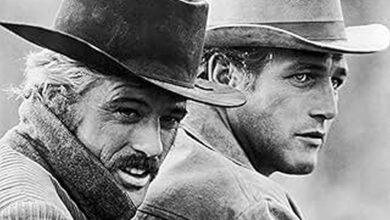The Complete Story of Bonnie Parker and Clyde Barrow’s Life
They were very young. In photos that decorate countless books and newspapers today, they look no older than 18 or 20. They were photographed with guns in playful poses. And they simply became icons – part romance, part horror – about which people couldn’t stop reading. Partly because of this, Bonnie Parker and Clyde Barrow story is a crime drama, Depression-era tragedy, and a media phenomenon.
Table of Contents
This article assembles the facts, the folklore, and a tiny bit of psychological edges that explain the shift of two ordinary people into one of America’s most notorious thieves and criminal couples.
Quick Snapshot
- Who: Bonnie Parker (October 1, 1910 – May 23, 1934) and Clyde Chestnut ‘Champion’ Barrow (March 24, 1909 – May 23, 1934).
- Active crime spree: Roughly 21 months (1932-1934) according to leading sources.
- End: Ambushed and killed by a law-enforcement posse on 23 May 1934 in Bienville Parish, Louisiana.
- Notable turning point: Discovery that their ʻlight-heartedʼ pose photos with guns found at the Joplin hide-out transform them into a national sensation overnight.
From Ordinary Beginnings to Outlaws’ Lives
Everything begins from some scratch, let’s explore that in Bonnie gang’s case;
Clyde Barrow

The passage from a humble farming family in Ellis County, Texas, was that through which Clyde Chestnut Barrow began his journey to the world of crime.
A hardscrabble farm kid, Clyde, was born to a family living in Texas, Ellis County. He was the fifth of seven children, and as a young man moved to West Dallas, with his family.
By the time he was in his late teens and early twenties, he was stealing cars and burglarizing small places. He served time at the tough Eastham Prison Farm, also known as “the Bloody ‘Ham,” and endured brutal conditions.
Some accounts report he mutilated his own toes to avoid a certain work detail. By the time he was with Bonnie, the pattern was fixed: an emerging young man, drawn into crime, with several arrests and incarcerations behind him. This was the setting for her own life, too.
Bonnie Parker
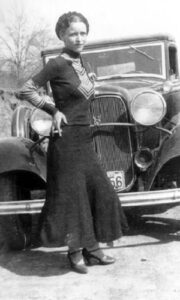
Bonnie Elizabeth Parker was born on October 1, 1910, in Rowena, Texas. Her father died while she was only about four, and her mother had moved the family into a working-class part of West Dallas, which was called Cement City.
She was a bright student and had interest in literature and poetry. She married very young (at 16) to Roy (Ray) Thornton, who later went to prison for robbery. The marriage was short.
In January 1930, she met Clyde Barrow (aged 21), and their relationship began. She was living in an era of extremely limited opportunities for many women; her path then shifted dramatically after teaming up with Clyde.
The Barrow Gang – The Beginnings of a Legal Career
Clyde did not act alone. The “Barrow Gang” was a loose-knit network of cooperative partners that changed to suit the circumstances: his brother Buck Barrow, Buck’s wife Blanche Barrow, W.D. Jones, Raymond Hamilton, Henry Methvin, and several others.
The gang’s crimes were still not the glamorous bank heists of legend, as in many cases, targets were small rural banks, gas stations, stores, and stolen cars.
According to Britannica: “robbed gas stations, restaurants, and small-town banks – their take never exceeded $1,500” in many cases.
Some key facts:
- They operated mainly in Texas, Oklahoma, Missouri, New Mexico, and Louisiana.
- In April 1934 that they killed their first two police officers along their highway route, in Texas and Oklahoma, respectively. They also fatally wounded a constable in Oklahoma.
- FBI files record that on April 1, 1934, Bonnie and Clyde gunned down two youthful highwaymen near Grapevine, Texas.
- Several warrants were out against Clyde by this time, and the chase was now undoubtedly step-up.
Read More: Biggest Heists in History
Despite popular myth, bank robberies were usually fairly small affairs; the mythology inflate many details.
The Joplin Discovery – How the Press Created Myth
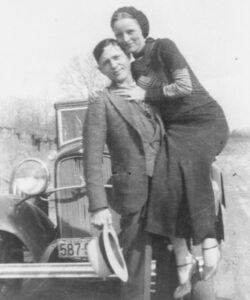
In April 1933, the gang took a hideout in Joplin, Missouri. They forgot to eliminate disturbing evidence consisting of many photographs of Bonnie Parker and Clyde Barrow decked out with revolvers, cigars, on a car fender – including several pictures of Bonnie holding a shotgun weapon.
When police went to their apartment, the photos were left behind; it was not long before the entire national press had gotten hold of them. The result was that the media turned the pair into romantic criminals, “lovers on the run”, which caught the public imagination during the harsh winters of the Great Depression.
Bonnie’s image – youthful, bold, flirtatious with a gun and a cigar – turned her into an icon. The Joplin pictures marked a turning point: lawbreakers became celebrities.
The Ambush – Final, Violent, Public
By early 1934, the gang had escalated violence significantly: jailbreaks, murders of lawmen, kidnappings. The pressure on state officials was high. Outraged by the Eastham breakout and the guards’ murder, the Texas prison system hired leading Texas Ranger Frank Hamer to run them down.
Working with Louisiana and Texas lawmen, Hamer’s team tracked down the pair via Henry Methvin’s family, stationed in Louisiana. On May 23, 1934, at about 9:15 a.m., Bonnie and Clyde drove a stolen Ford V-8 into an ambush set up on Louisiana State Highway 154, near Sailes (some sources say “between Gibsland and Sailes“) in Bienville Parish.
The officers wasted no time in opening fire. There are many reports, but the car had by as many as 130 bullets. The pair died immediately. Thus, they were expired – albeit violently.
Beyond the Headlines – A More Comprehensive Factual View
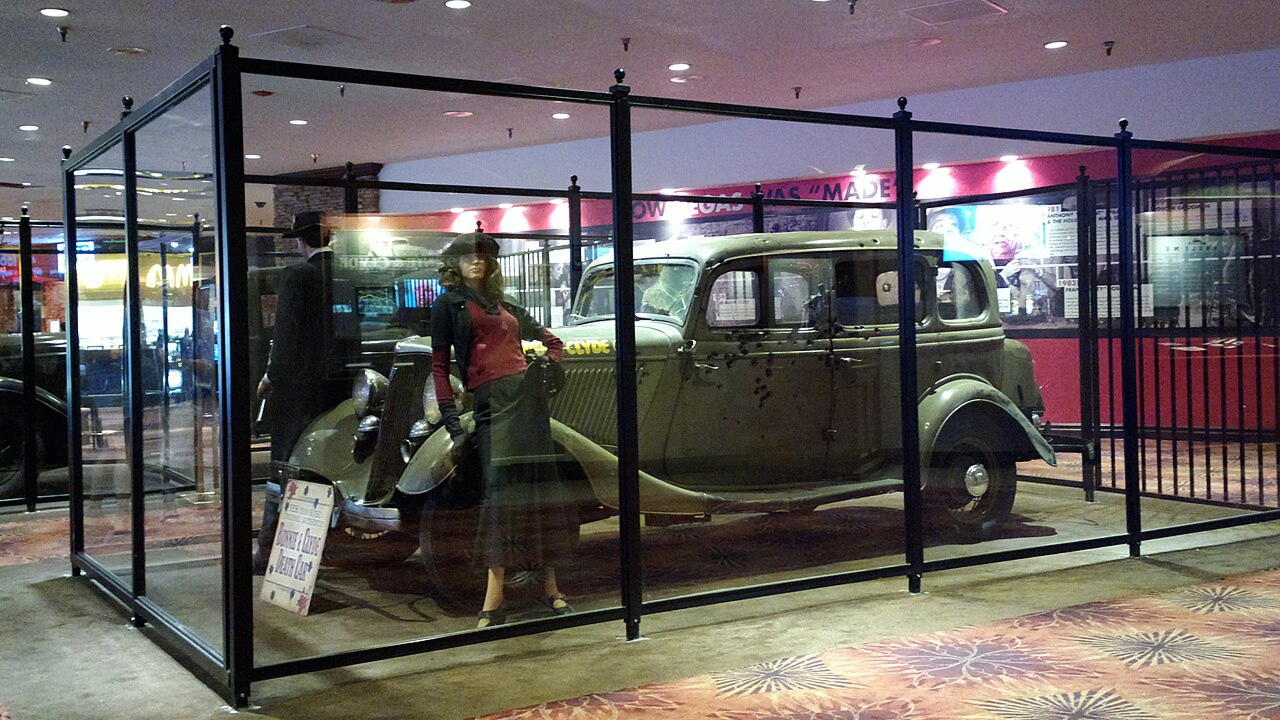
Bonnie’s Role
Most contemporary accounts depict her as an accordion-playing, gun-wielding partner, ready to participate in up to fifty murders alongside the gang. But recent histories say that her part in these killings is not clear. It can be proved that she sparked shootouts and was at robberies, yet many claims that she fired a gun are unfounded.
Heists & Targets
The gang often bypassed large fortified banks in favor of small shops or rural banks, where the risk was lower. The legend of them making massive bank loot is in exaggeration.
The “Death Car” Cult
The car in which they died (a 1934 Ford Model 40 V-8) became a traveling exhibition, riddled with bullet holes and on display at fairs and carnivals all over the country.
The public was eager and fascinated with crime glamour.
The Social Context
The couple’s crime wave occurred in a country ridden with the hardships of the Great Depression – many Americans vented anger on banks, and others could be found in despair. Some viewed the gang as anti-heroes who fought back at society.
You Might Like to Read: Legendary Thieves in Fiction
This thin veneer of “Robin Hood” feeling (even though wrong) is in Britannica.
The Cultural Echo – Film, Music & Myth-Making
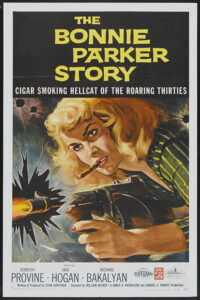
The story of Bonnie Parker and Clyde Barrow did not come to an end with their deaths. A film Bonnie and Clyde shot in 1967 (directed by Arthur Penn, starring Faye Dunaway and Warren Beatty), raised them to tragic anti-heroes in an atmosphere of romance between the two, glorifying their relationship and sanitizing violence.
More Markers in Contemporary Display
- A 1968 song by Serge Gainsbourg and Brigitte Bardot called “Bonnie & Clyde” referenced their story.
- Numerous documentaries and exhibitions, books, and true-crime retrospectives keep the story alive.
- Their style gave rise to fashions (Bonnie’s beret, the car, the guns), and the concept of the “lover bandit” became a staple in popular crime psychology.
- Time and other media have disabled fact by means of myth. For example, the Netflix film The Highwaymen (2019) represents the story from the lawmen’s side and points out historical errors in popular renderings.
A Psychological Interjection
What drives two people down such a road — and binds them together in this manner?
- Shared identity and belonging: Clyde developed a criminal identity from an early age; perhaps Bonnie found both escape and attachment in the partnership. Together, they built a “we” against the world.
- Media & narrative reforestation: The discovery of those Joplin photos gave them an identity (the glamorous outlaw) which may have shaped behaviour. Once you know the world is watching, you can take on a role.
- Escalation of risk: Their initial crimes might have been opportunistic, but as law enforcement pressure increased (jail breaks, murder, betrayals), violence increased. Escalation is a well-established psychological and criminological pattern.
- Romanticised self-image: They might have believed the story: “We’re daring, out of the system,” which can also reduce internal inhibitions about violence or law-breaking. As “we’ll get away with this” to “we’ll be famous for this”.
Note: These are not justifications – they are just psychological frameworks to understand the context.
Famous Artifacts & Trivia
- Bonnie’s poem, The Story of Bonnie and Clyde (also called The Ballad of Bonnie and Clyde) was published just after her capture by the newspapers, humanizing them as star-crossed lovers and helping to build the cowboy legend.
- Clyde’s prison wound: As noted, he hobble-walked later in life because of injury to his toes from his own attempt to escape the labor detail at Eastham.
- The gang’s victims: It is believed they killed around 9 lawmen and several civilians – exact numbers vary by source.
- Bonnie’s height and weight: FBI records list her at 5′5″ and 100 pounds.
- The famous Joplin photos: The gun-posing images were found on April 13, 1933, in Missouri, and that event triggered the shift to national notoriety.
Detailed Timeline Highlights
- March 24, 1909: Clyde Barrow is born in Ellis County, Texas.
- October 1, 1910: Bonnie Parker is born in Rowena, Texas.
- January 1930: Bonnie meets Clyde in Dallas. She is 19; he is 21.
- 1930 – 32: Clyde serves time at Eastham Prison Farm; brutal conditions. Bonnie visits and aids in escape plotting.
- April 1932: Bonnie Parker is caught in a failed robbery in Kaufman, Texas, and serves time for about two months.
- 1933: Hideout in Joplin, Missouri; famous photos discovered April 13, 1933.
- January 1934: The gang breaks out five prisoners from Eastham; taking two guard’s life.
- April 1, 1934: Two highway patrolmen were shot near Grapevine, Texas.
- May 23, 1934: Ambush and death on Louisiana Highway 154.
More Readings with Layers
Britannica’s detailed historical case summary on “Bonnie & Clyde” provides a fact-checked, reliable timeline.
FBI’s case summary on “Bonnie & Clyde provides direct law-enforcement data.
Timelines and historical archives (e.g., Timetoast’s timeline)
Concluding Frame
Bonnie Parker and Clyde Barrow is a collage poem like this: youthful restlessness, grown violent union. Media narratives blend their share into the atrocity.
They are part of the landscape where fable meets history, they are part history, part myth, and part pop-culture – all three quite different. Their lives were short and their deaths a moment’s shock, yet the image persists: a pair of lovers who went wild and turned to bloody crime have left an American story behind them that remains in history.
After all, what readers learn from their work isn’t the celebration but a moment to consider social conditions, individual choices, and how the media can connect the identities of criminals with an icon – a pattern echoed in every modern bank robberies film that blends fact with legend.
